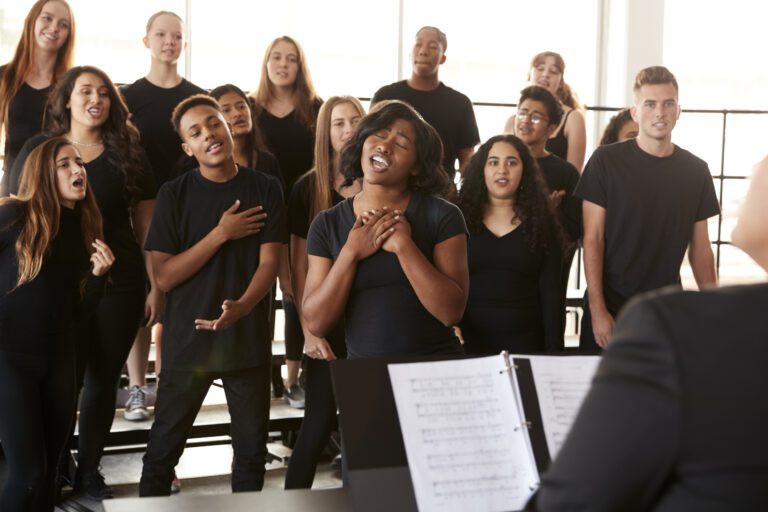What is Taught in Choir?
Choir singing is an art form that goes beyond just vocalizing melodies. It’s a blend of music, discipline, teamwork, and expression. Whether you’re joining a school choir, a church ensemble, or an online singing group, there’s a lot to learn. This blog explores the key elements taught in choir, giving you insights into how these lessons shape a singer’s journey.

1. Vocal Techniques and Breath Control
A choir focuses on training singers to use their voices effectively and healthily. This includes mastering vocal techniques such as:
Diaphragmatic Breathing: Learning to breathe deeply and steadily for sustained singing.
Vocal Warm-Ups: Exercises to prepare the vocal cords, like scales and arpeggios.
Pitch and Tone Control: Techniques to stay in tune and produce a clear, resonant sound.
Choir training ensures that every singer develops the stamina and control needed for long performances.

2. Harmony and Blending
One of the defining features of a choir is harmony—the simultaneous combination of different notes to create a pleasing sound. Choir members learn:
Listening Skills: To tune into other singers and adjust their voices for a balanced blend.
Singing in Parts: Understanding and performing soprano, alto, tenor, or bass lines.
Dynamic Control: Varying volume to enhance the choir’s collective sound.
Blending seamlessly with others is a critical skill taught in choirs to create that unified, ethereal sound.

3. Sight-Reading Music
Sight-reading is the ability to read and sing music from a sheet without prior practice. In choirs, this skill is essential for learning new pieces quickly.
Basics of Music Notation: Understanding notes, rhythms, dynamics, and markings.
Pitch Recognition: Identifying intervals and singing them accurately.
Rhythmic Precision: Following time signatures and rhythmic patterns in the score.

4. Articulation and Diction
Clear pronunciation of lyrics is vital in choir singing, especially for audiences to understand the message of the song. Choirs teach:
Vowel Shaping: Modifying vowels to create uniformity among singers.
Consonant Clarity: Emphasizing consonants for better lyrical delivery.
Tongue and Jaw Exercises: Improving articulation for faster, clearer singing.

5. Musical Expression and Dynamics
Choirs teach singers how to convey emotion and meaning through music. This includes:
Dynamics: Understanding and performing crescendos (gradual increases in volume) and decrescendos (gradual decreases).
Phrasing: Singing phrases with natural rise and fall to reflect the song’s mood.
Interpretation: Learning how to connect emotionally with the music and lyrics.

Benefits of Learning in a Choir
Improved Vocal Skills: Gain technical proficiency in singing.
Enhanced Listening Abilities: Learn to harmonize and adjust your tone.
Emotional Growth: Express yourself through music.
Social Interaction: Build friendships with like-minded individuals.
Cultural Exposure: Explore diverse musical genres and traditions.

How Online Choir Training Differs
With the rise of digital learning, online choir training has become popular. It offers:
Accessibility: Learn from the comfort of your home.
Global Community: Connect with singers and instructors worldwide.
Flexible Scheduling: Fit lessons into your busy lifestyle.
Personalized Feedback: Receive one-on-one guidance from experienced coaches.
Final Thoughts
Joining a choir is a transformative journey that nurtures your vocal talent, musical knowledge, and sense of community. What is taught in choir Whether you’re a beginner or an experienced singer, choir training offers something for everyone. From mastering vocal techniques to performing harmoniously with others, the lessons you learn will enrich your musical experience and personal growth.
If you’re ready to embark on this rewarding path, consider joining a choir or exploring online choir training courses. Platforms like The Mystic Keys provide expert guidance and a supportive learning environment to help you achieve your choral aspirations.
Be sure to join our Christmas choir competition, Heavenly Harmonies, to showcase your choir’s talent and spread the holiday spirit.








